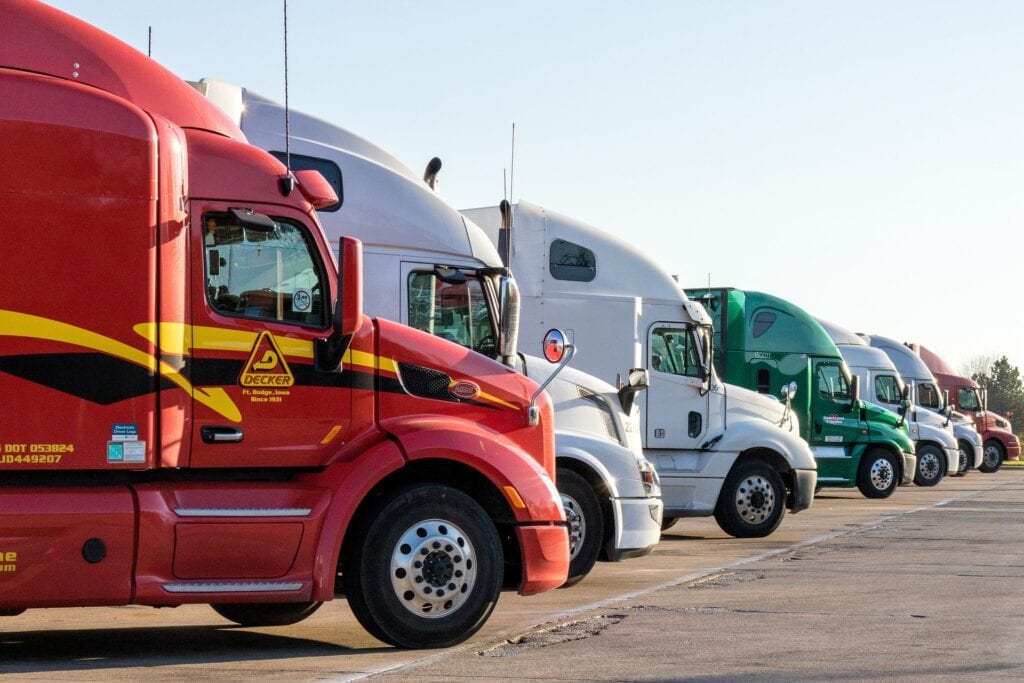Safety Tips For Driving Near Large Trucks
As warmer weather approaches, you might be planning on spending more time on the freeway, traveling to the beach, amusement park, or other summertime destinations. Unfortunately, these fun family trips come with an increased risk of vehicle accidents—and if the accident involves a semi-truck, the damage can be devastating.

Statistics show that the rate of fatal accidents involving large trucks has increased over 30 percent since 2009. Other people on the road are far more likely to be injured or killed than the truck driver: of the 4,136 people killed in an accident involving a truck in 2018, only 16 percent were truck drivers. Sixty-seven percent were occupants of smaller passenger vehicles, and 15 percent were pedestrians, motorcyclists, or bike riders. The disparity is largely due to the weight of trucks, which can be 20 to 30 times greater than the weight of the average passenger vehicle. Small cars can also underride trucks in accidents, and loaded semi-trucks take much longer to brake than regular vehicles. Driver fatigue and substance abuse also played a role in many trucking accidents, and studies have found that truck drivers often stay on the road for more hours than legally permitted.
Mechanical problems and speeding can also lead to truck accidents: The Federal Motor Carrier Safety Administration found that 27 percent of trucks involved in crashes had brake problems. Truck drivers are also more likely to speed and drive aggressively when they feel they’re under pressure to meet deadlines: 10 percent of large truck drivers said they were feeling pressured to drive faster or further than could be safely expected at the time of the accident. Another 8 percent described themselves as fatigued or ill.
How can you stay safe while sharing the road with large trucks? There are a number of safety measures you can take. First, remember that trucks have large blind spots on all four sides of the vehicle. If you are unable to see the truck driver in his side view mirror, chances are the driver can’t see you, either. Therefore, never drive in a truck’s blind spot.
“Cutting off” another car on the road is always dangerous, but it’s especially dangerous to cut off a truck. Because the truck weighs up to 30 times more than a passenger vehicle, the truck cannot slow down quickly to avoid aggressive drivers. It is very important to pass trucks safely by signaling clearly and moving into the left lane. Never pass on the right, and never pass a truck on a downgrade, when these heavy vehicles will naturally accelerate.
Tailgating a truck is also especially dangerous, since it puts you in the driver’s blind spot. In the event of a sudden stop, your vehicle could slide under the truck ahead of you, causing a serious accident.
It’s also important to be patient when you’re sharing the road with large trucks. These vehicles might drive slower than others on the road, often due to speed-limiting technology installed in the truck. Driving aggressively, honking, and weaving in and out of lanes creates distraction and increases the risk of an accident.
In some truck accidents involving more than one vehicle, both drivers are at fault. However, some drivers of smaller passenger vehicles are injured or killed through no fault of their own after colliding with a truck. In these cases, the injured driver might be able to seek compensation for medical bills, lost wages, and other costs incurred as a result of a truck driver’s negligence.
The onus is on the injured party (the plaintiff) to prove the accident was the truck driver’s fault. There are many ways a truck driver could be at fault for the accident. If the truck driver was speeding, driving more hours than legally permitted, or driving a truck that exceeded the legal weight limit, a jury could find them at fault for the accident. Needless to say, a truck driver who was under the influence of drugs or alcohol can also be held responsible in court. Even if the injured driver played some role in causing the accident, they could be entitled to compensation so long as they were less than 51 percent responsible for the crash.
Proving that a truck driver was responsible for your injuries can be a long, arduous process. If you believe your accident was the result of a truck driver’s negligence, you need an experienced truck accident attorney to help make your case. An experienced truck accident lawyer at Tittle & Perlmuter can help you. Our attorneys can review medical files and police reports, as well as other evidence, that supports your claim. Hiring an attorney means you can focus on healing from the physical and emotional damage of your accident while a highly skilled professional helps build your case.
If you have been involved in a truck accident that was not your fault, don’t hesitate to contact Tittle & Perlmuter. Our attorneys can help you pursue justice and get compensation for the costs—physical, emotional, and financial—of your accident.

